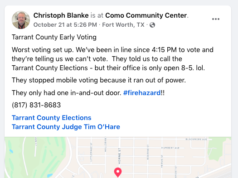We got sleepy-eyed smiles on our faces upon hearing that the California city of Coalinga — an oil town in the conservative San Joaquin Valley — had sold its prison to a cannabis extraction company. What next? Snoop Dogg buys the prison van and installs shag carpet and lava lamps?
The prison was built in 1990 as a community correctional facility to hold state inmates with fewer than 18 months to serve. At the time, California’s state prisons were dangerously overcrowded. The Coalinga facility was one of five in the state built to help alleviate the human congestion. The prison’s architect created a 514-bed unit divided into two living areas and connected by an administrative building. The living units were divided into dormitories, classrooms, kitchens, dining rooms, and so forth — large spaces that just happen to be perfect as both grow rooms and extraction facilities without the clutter of individual prison cells.
The facility closed in 2011 after the state decided not to renew its contract. Maintenance on the facility has cost the city nearly $3 million since its doors last clanged shut. Ocean Grown Extracts, which specializes in medical marijuana (CBD) oils that do not get people high, was looking for a large space. The prison offered several acres for outdoor growing as well, including fences topped with razor wire to protect the crop. In other words, a perfect fit with a dose of irony since many of the inmates who made their way through the prison were in there for marijuana offenses.
While the Coalinga City Council meetings were apparently rancorous, the mayor and city manager convinced the populace that the economic impact from the sale — $4.1 million to the city, 100 jobs to start, and future taxes — were too good to ignore. The sale was completed in early August. Maybe a trend has been set and other prisons will follow. Then everyone will be trying to break into prisons.
Reproductive Woes
Nearly three months after the U.S. Supreme Court overturned a controversial 2013 Texas law that shuttered 20 abortion clinics, wide swaths of Texas (mostly rural) are still awaiting the return of essential women’s services by reproductive healthcare providers. Re-opening the clinics won’t be easy, said Sarah Wheat, spokesperson for Planned Parenthood of Texas.
“After the health centers closed, the staff moved on to other jobs,” she said. “That staff needs to be replaced. Many of the buildings have already been leased or sold. These are major challenges.”
While Planned Parenthood isn’t the only reproductive healthcare provider in Texas, it is one of the largest. And for millions of Texas women, insured or otherwise, the nonprofit is often the first line of defense in screening and diagnosing a wide range of ailments and diseases like chronic high blood pressure or breast and cervical cancers. In 2011, the Texas Legislature slashed Planned Parenthood’s funding. Those cuts led to the closure of an estimated 70 family planning clinics, which did not administer abortions but focused on providing birth control and screening services. Wheat said her group doesn’t expect the state legislature to provide the resources needed to restore the lost health services. However, many private groups and individuals have stepped up recently to donate money. The priority for Planned Parenthood, Wheat added, is to identify the areas of greatest need within Texas and strategically open clinics in those towns. Rural West Texas is a region likely to see clinics opening in the near future.
A future ploy by Texas legislators to restrict women’s access to reproductive healthcare wouldn’t surprise Wheat or her colleagues, but she hopes the elected officials will find better uses of their time. The Texas Legislature has had a “single-minded political focus on women’s healthcare the last few sessions,” she said. “But we know there are so many important areas that need [lawmakers’] attention, like schools and the economy. We hope they will put their time and focus there so we can focus on what we do, which is ensuring women have access to healthcare.”












